The basic knowledge of Coffee Bean roasting Coffee Bean Baking Theory (1)
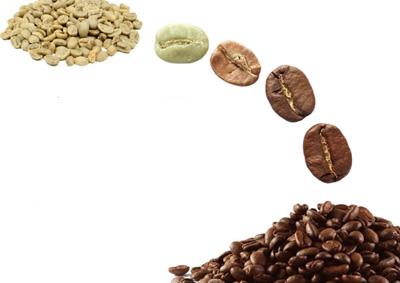
Grasp a handful of coffee beans smell, there is always a pungent earthy smell, different from the impression of charming coffee fragrance. However, when properly roasted, raw beans emit the world's most intense aroma.
The tiny high-altitude Arabica green beans are like a warehouse full of chemicals. Scientists have identified more than 2,000 known ingredients, including 700 to 850 aromatic ingredients, making them the most complex flavor in the human diet. There are only 150 kinds of aromatic substances used to flavor herbs in the catering industry, and the mellow ingredients of wine are far less abundant than coffee.
Roasting awakens aromatic spirits However, the 700 or 800 aromatic "spirits" contained in coffee beans will not come out on their own, and must be awakened by professional roasting. Without this procedure, coffee will only smell like sunlight or washing, and it will smell uncomfortable, let alone drinking. After five to twenty-five minutes of heating, the raw beans undergo a drastic change in chemical composition, and then emit a rare fragrance in the world. This complex chemical reaction cannot be simulated by even the most sophisticated laboratories today. However, it can be summarized into several important items.
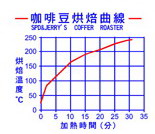
First, when raw beans are baked at temperatures above 200 degrees Celsius, they begin to evaporate, expanding by 60 percent and losing 10 to 25 percent of their weight. Depending on the degree of roasting, the deeper the roasting, the greater the weight loss. Another important phenomenon is outgassing. Green beans release carbon dioxide during baking and continue to outgass for 30 days after baking. Interestingly, the emission of carbon dioxide contributes to the preservation of coffee beans, because the exhaust process, oxygen molecules are not easy to invade, that is to say, the oxidation of coffee flavor can not be carried out, but after roasting for seven days, the exhaust phenomenon gradually slows down, oxygen molecules are easy to attach to the bean surface, coffee flavor quickly declines, this is why coffee beans are best used up within a week after opening.
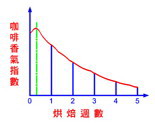
Baking tip: Get maximum caramelization and minimum carbonization. Caramelization is the most important part of coffee flavor. After six to seven minutes of roasting, the green beans absorb a lot of heat and start the pyrolysis reaction. The first explosion occurs. Some sugars are converted into carbon dioxide. The water continues to evaporate. New aromatic components gradually develop into so-called coffee oil, which combines with hundreds of aromatic substances such as nicotinic acid, citric acid, quinic acid, malic acid, acetic acid, caffeine, etc. Pyrolysis reaction can continue to the second explosion, although caramelization is an important process to wake up the aromatic spirit, but with the baking time lengthened, some ingredients will also be carbonized, forming bad astringent substances, how to obtain the highest caramelization, while also reducing carbonization to a minimum, seemingly contradictory is the baker's biggest challenge.
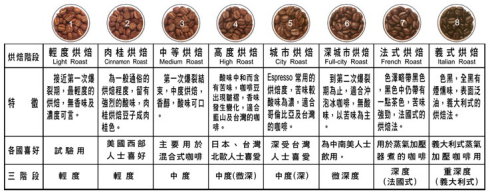
Note the changes in sound, color and taste of the above chemical reactions. When baking, you can judge the degree of progress by listening to the sound, seeing the color and smelling the taste. The color of coffee beans will continue to heat up, from gray to golden yellow and then light brown, and then a trace of oil auburn, then a large amount of oil is oily black brown, if you bake down, the coffee oil on the surface of the beans will dry, dead black, and emit a lot of blue smoke, with a burning smell, this is close to ignition warning, ready to play 119 to help put out the fire. Experienced bakers choose a light brown to a greasy dark brown for safety. Coffee beans from shallow to deep, because caramelization and acid substances from the change caused.
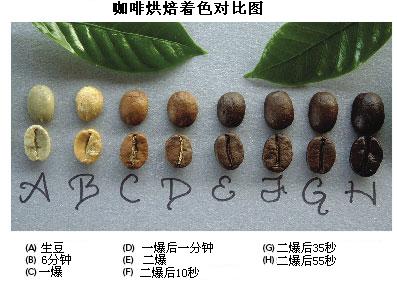
Listening to the sound is also the basis for judging the baking degree. If the temperature of the roaster is hot enough, the coffee beans will emit two popping sounds during the roasting process. Take the high temperature resistant raw beans such as Mantenin and sweet potato as an example. The first popping sound will be emitted in about seven minutes. The sound is low and thin, which means that the "pyrolysis" effect has started. That is, the starch begins to convert into caramel. The moisture also sprays out of the bean surface with the carbon dioxide. The low popping sound will be emitted. After two minutes, it will calm down. After about twelve minutes, it will emit a more violent and sharp popping sound. This was the sound of the coffee bean's cell fibers breaking, which meant that the roasting was nearing its end. If it continued, the aroma would decay. Coffee beans can talk.
(This article is reproduced)
Important Notice :
前街咖啡 FrontStreet Coffee has moved to new addredd:
FrontStreet Coffee Address: 315,Donghua East Road,GuangZhou
Tel:020 38364473
- Prev

Basic knowledge of coffee honeycomb structure of roasted coffee beans
Coffee enthusiast, Professor Yukio Hiroase of Kanazawa University in Japan, has a doctorate in engineering and specializes in computational mechanics. the boss has studied coffee beans with a hundred and twenty thousand scientific spirit and achieved the following results: 1 the interior of roasted coffee beans is honeycomb structure. different roasting methods form different honeycomb structures. (2) the diameter of honeycomb cavity is basically 0.01mm, that is, about 10 microns. three
- Next

Baking and blending skills of coffee beans must be seen by baristas
When high-quality coffee beans are picked, the most important step in making them gourmet coffee is roasting and mixing. A master baker must have both the temperament of an artist and the rigor of a scientist. Only in this way can we ensure that the sugars and other carbohydrates contained in the coffee are carbonized during the roasting process, thus producing the well-known coffee fat and producing good coffee with high quality and consistent style.
Related
- Beginners will see the "Coffee pull flower" guide!
- What is the difference between ice blog purified milk and ordinary milk coffee?
- Why is the Philippines the largest producer of crops in Liberia?
- For coffee extraction, should the fine powder be retained?
- How does extracted espresso fill pressed powder? How much strength does it take to press the powder?
- How to make jasmine cold extract coffee? Is the jasmine + latte good?
- Will this little toy really make the coffee taste better? How does Lily Drip affect coffee extraction?
- Will the action of slapping the filter cup also affect coffee extraction?
- What's the difference between powder-to-water ratio and powder-to-liquid ratio?
- What is the Ethiopian local species? What does it have to do with Heirloom native species?

